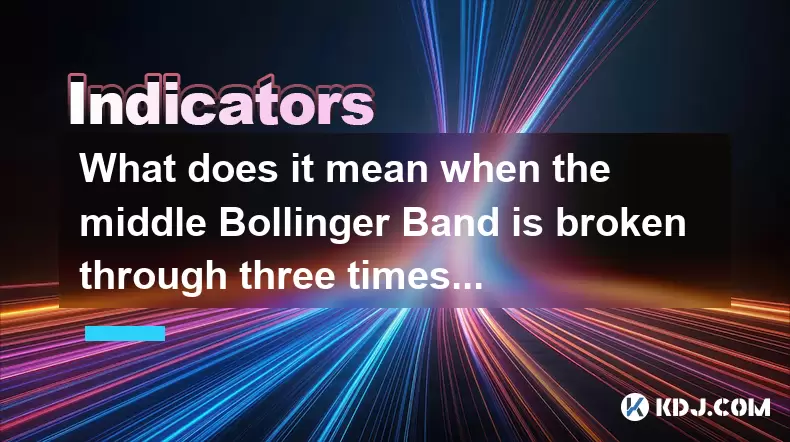-
 Bitcoin
Bitcoin $114800
-0.87% -
 Ethereum
Ethereum $4776
1.26% -
 XRP
XRP $3.035
-0.59% -
 Tether USDt
Tether USDt $0.9997
0.01% -
 BNB
BNB $868.3
-2.21% -
 Solana
Solana $207.8
2.24% -
 USDC
USDC $0.9999
0.00% -
 Dogecoin
Dogecoin $0.2321
-2.70% -
 TRON
TRON $0.3658
1.42% -
 Cardano
Cardano $0.9042
-1.85% -
 Chainlink
Chainlink $25.67
-0.24% -
 Hyperliquid
Hyperliquid $43.96
1.17% -
 Sui
Sui $3.679
-2.11% -
 Stellar
Stellar $0.4091
-1.83% -
 Ethena USDe
Ethena USDe $1.000
-0.01% -
 Bitcoin Cash
Bitcoin Cash $593.4
0.58% -
 Avalanche
Avalanche $25.53
0.89% -
 Hedera
Hedera $0.2476
-1.21% -
 Litecoin
Litecoin $119.7
-1.84% -
 UNUS SED LEO
UNUS SED LEO $9.609
0.34% -
 Toncoin
Toncoin $3.352
-0.91% -
 Shiba Inu
Shiba Inu $0.00001292
-2.45% -
 Uniswap
Uniswap $11.08
-1.13% -
 Polkadot
Polkadot $4.100
-1.09% -
 Cronos
Cronos $0.1609
4.53% -
 Dai
Dai $0.9999
0.00% -
 Bitget Token
Bitget Token $4.706
-0.88% -
 Aave
Aave $350.1
2.03% -
 Monero
Monero $268.0
0.06% -
 Ethena
Ethena $0.7069
-4.77%
What does it mean when the middle Bollinger Band is broken through three times in a row?
Three consecutive breaks of the middle Bollinger Band signal market indecision, often preceding a volatility surge or trend shift in crypto price action.
Aug 13, 2025 at 11:35 am

Understanding the Bollinger Bands Structure
The Bollinger Bands indicator is a widely used technical analysis tool in the cryptocurrency trading space. It consists of three lines: the middle band, the upper band, and the lower band. The middle band is typically a 20-period simple moving average (SMA). The upper and lower bands are set two standard deviations away from the middle band, adjusting dynamically based on market volatility. When prices move toward the upper band, the market is considered overbought. Conversely, when prices approach the lower band, the market may be oversold.
The middle Bollinger Band acts as a dynamic support or resistance level. In trending markets, price often respects this band as a baseline. When price crosses above or below this middle line, it can signal shifts in momentum. Traders pay close attention to how price interacts with this band, especially when repeated interactions occur in a short span.
Significance of Three Consecutive Breaks Through the Middle Band
When the price of a cryptocurrency breaks through the middle Bollinger Band three times in a row, it suggests a period of heightened indecision or consolidation. Each break indicates a temporary shift in momentum—either bullish or bearish—but the repeated crossing back and forth shows a lack of sustained direction. This pattern often occurs during low volatility phases or before major price movements.
Each break can be interpreted as follows:
- A move above the middle band may signal short-term bullish momentum.
- A move below the middle band may reflect short-term bearish pressure.
- Three consecutive crosses suggest that neither buyers nor sellers are able to maintain control.
This kind of price action is commonly seen in sideways or choppy markets, where traders are testing levels without establishing a clear trend. It can also precede a volatility expansion, especially if the bands themselves are contracting.
How to Identify the Pattern on a Crypto Chart
To detect three consecutive middle band breaks, follow these steps:
- Open a candlestick chart on your preferred cryptocurrency trading platform (e.g., Binance, TradingView).
- Apply the Bollinger Bands indicator with default settings (20-period SMA, 2 standard deviations).
- Observe the price action relative to the middle Bollinger Band.
- Look for three distinct candlesticks that close on alternating sides of the middle band.
- Ensure that each cross is confirmed by the closing price, not just the wick.
For example:
- Candle 1 closes above the middle band.
- Candle 2 closes below the middle band.
- Candle 3 closes above the middle band again.
This sequence confirms the three-break pattern. It's essential to use closing prices to avoid false signals from intra-candle spikes. Using higher timeframes like 1-hour or 4-hour charts can provide more reliable signals than lower timeframes, which are more prone to noise.
Interpreting the Pattern in Different Market Contexts
The meaning of three middle band breaks varies depending on the broader market context. In a strong uptrend, repeated breaks above the middle band followed by brief dips below may indicate healthy pullbacks before continuation. In this case, the third break upward could be a re-entry signal for long positions.
In a downtrend, three consecutive breaks might reflect short-term rallies that fail to reverse the bearish momentum. Here, each break above the middle band could be seen as a sell opportunity.
During consolidation phases, such as within a trading range or triangle pattern, the three-break sequence often highlights equilibrium between buyers and sellers. The narrow band width during this time reinforces low volatility. Traders might wait for a band expansion or a close outside the upper or lower band to confirm the next directional move.
Volume analysis can enhance interpretation. If the breaks occur on low volume, the moves lack conviction. If volume spikes on the third break, it may signal the start of a new leg.
Trading Strategies Based on the Three-Break Pattern
Traders can use this pattern to refine entry and exit points. One approach is the contrarian strategy:
- After the third break, anticipate a reversal if the market appears overextended.
- For instance, if the third break is upward and the price is near the upper band, consider a short position with a stop-loss above the recent high.
Another method is the momentum confirmation strategy:
- Wait for the third break and then look for candlestick reversal patterns (e.g., bearish engulfing, pin bars).
- Combine with RSI or MACD to check for divergence.
Risk management is critical:
- Always set a stop-loss just beyond the most recent swing point.
- Use a trailing stop if the trade moves favorably.
- Adjust position size based on account risk tolerance (e.g., risk no more than 1-2% per trade).
Avoid trading this pattern in isolation. It should be part of a broader analysis that includes support/resistance levels, trendlines, and order flow.
Common Misinterpretations and Pitfalls
A frequent mistake is assuming that three breaks automatically predict a reversal. The pattern alone does not guarantee a trend change. Some traders misread the signals during strong trending markets, where price can oscillate around the middle band without reversing.
Another pitfall is ignoring timeframe alignment. A three-break pattern on a 5-minute chart may be insignificant if the 1-hour trend is strongly directional. Always check higher timeframes for context.
False signals can occur during news events or pump-and-dump schemes, common in crypto markets. Sudden spikes may cause temporary band breaks that quickly reverse. Using volume filters or waiting for confirmation candles helps reduce such risks.
Frequently Asked Questions
What timeframes are best for observing three middle Bollinger Band breaks?
The 1-hour and 4-hour charts are most effective for identifying reliable three-break patterns. These timeframes reduce market noise while capturing meaningful price movements. Lower timeframes like 5-minute or 15-minute charts generate too many false signals due to volatility, while daily charts may be too slow for timely entries.
Does the direction of the first break matter in this pattern?
Yes. If the first break is upward, it suggests initial bullish pressure, and the subsequent breaks reflect resistance testing. If the first break is downward, it indicates bearish momentum being challenged. The sequence helps assess whether buyers or sellers are losing control incrementally.
Can this pattern be automated using trading bots?
Yes. You can program a bot to detect three consecutive closes on alternating sides of the middle Bollinger Band. Use conditions like:
close[0] > middle_bandclose[1] < middle_bandclose[2] > middle_band
Or the inverse for downward starts. Combine with filters for ATR (volatility) and volume to improve accuracy.
Is this pattern more reliable in certain cryptocurrencies?
It tends to work better in high-liquidity coins like BTC, ETH, or BNB, where price action is less prone to manipulation. Low-cap altcoins often exhibit erratic movements that invalidate technical patterns. Always verify the pattern in assets with consistent volume and tight spreads.
Disclaimer:info@kdj.com
The information provided is not trading advice. kdj.com does not assume any responsibility for any investments made based on the information provided in this article. Cryptocurrencies are highly volatile and it is highly recommended that you invest with caution after thorough research!
If you believe that the content used on this website infringes your copyright, please contact us immediately (info@kdj.com) and we will delete it promptly.
- Viral Memes, RWA Platforms, and DePIN Crushers: What's Hot in Crypto?
- 2025-08-24 14:45:20
- Meta's Hypernova Glasses: AR's Next Big Thing?
- 2025-08-24 15:05:15
- Down Under Showdown: Australia vs. South Africa in ODI Cricket
- 2025-08-24 15:10:14
- XYZVerse, Shiba Inu, and the 2025 Bull Cycle: A Meme Coin Evolution
- 2025-08-24 13:05:12
- WLFI Token, BingX, and the Trading Landscape: A New York Perspective
- 2025-08-24 12:45:20
- Aave, Governance, Allocation: Navigating DeFi's Shifting Sands
- 2025-08-24 12:45:20
Related knowledge

What does it mean when the +DI and -DI cross frequently in the DMI indicator but the ADX is flattening?
Aug 11,2025 at 03:15am
Understanding the DMI Indicator ComponentsThe Directional Movement Index (DMI) is a technical analysis tool composed of three lines: the +DI (Positive...

What does the sudden appearance of a "dark cloud cover" candlestick pattern during an uptrend indicate?
Aug 13,2025 at 11:35am
Understanding the 'Dark Cloud Cover' Candlestick PatternThe dark cloud cover is a bearish reversal pattern in technical analysis that typically appear...

What does it mean when the moving average, MACD, and RSI all send buy signals simultaneously?
Aug 11,2025 at 01:42pm
Understanding the Convergence of Technical IndicatorsWhen the moving average, MACD, and RSI all generate buy signals at the same time, traders interpr...

What does it mean when both the KDJ indicator and the RSI show overbought signals simultaneously?
Aug 13,2025 at 11:35am
Understanding the KDJ Indicator in Cryptocurrency TradingThe KDJ indicator is a momentum oscillator derived from the Stochastic Oscillator, widely use...

What does it mean when the price is trading above the SAR indicator but the red dots are densely packed?
Aug 09,2025 at 11:49pm
Understanding the SAR Indicator and Its Visual SignalsThe SAR (Parabolic Stop and Reverse) indicator is a technical analysis tool used primarily to de...

What does it mean when the candlestick chart forms a "Morning Star" but trading volume is sluggish?
Aug 12,2025 at 06:28pm
Understanding the Morning Star Candlestick PatternThe Morning Star is a three-candle bullish reversal pattern commonly observed in cryptocurrency pric...

What does it mean when the +DI and -DI cross frequently in the DMI indicator but the ADX is flattening?
Aug 11,2025 at 03:15am
Understanding the DMI Indicator ComponentsThe Directional Movement Index (DMI) is a technical analysis tool composed of three lines: the +DI (Positive...

What does the sudden appearance of a "dark cloud cover" candlestick pattern during an uptrend indicate?
Aug 13,2025 at 11:35am
Understanding the 'Dark Cloud Cover' Candlestick PatternThe dark cloud cover is a bearish reversal pattern in technical analysis that typically appear...

What does it mean when the moving average, MACD, and RSI all send buy signals simultaneously?
Aug 11,2025 at 01:42pm
Understanding the Convergence of Technical IndicatorsWhen the moving average, MACD, and RSI all generate buy signals at the same time, traders interpr...

What does it mean when both the KDJ indicator and the RSI show overbought signals simultaneously?
Aug 13,2025 at 11:35am
Understanding the KDJ Indicator in Cryptocurrency TradingThe KDJ indicator is a momentum oscillator derived from the Stochastic Oscillator, widely use...

What does it mean when the price is trading above the SAR indicator but the red dots are densely packed?
Aug 09,2025 at 11:49pm
Understanding the SAR Indicator and Its Visual SignalsThe SAR (Parabolic Stop and Reverse) indicator is a technical analysis tool used primarily to de...

What does it mean when the candlestick chart forms a "Morning Star" but trading volume is sluggish?
Aug 12,2025 at 06:28pm
Understanding the Morning Star Candlestick PatternThe Morning Star is a three-candle bullish reversal pattern commonly observed in cryptocurrency pric...
See all articles

























































































